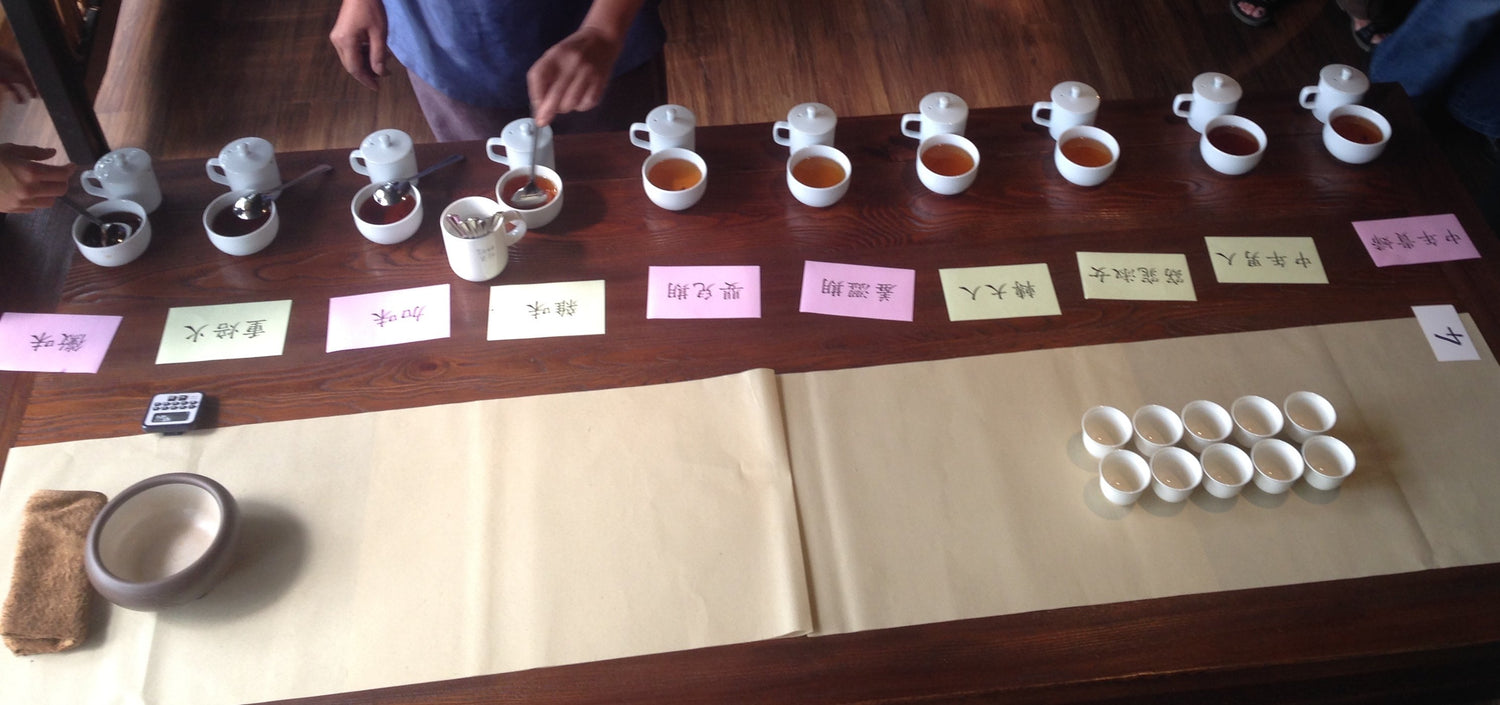
Aged Oolong Tea: Premier Seminar in Taichung, Taiwan
We recently attended a seminar given by the head director of TRES (Tea Research and Extension Station) on his unprecedented research in aging Oolong Tea. Mr. 陳國任 provided a comprehensive lesson that offered practical guidelines as well as in-depth scientific research into the compounds in tea that change with age, and the implications therein.
Professor Chen gave a detailed explanation of how the antioxidants in tea, namely the following polyphenols: epicatechin, epigallocatechin, epicatechin gallate, and epigallocatechin gallate fluctuate as a result of the aging the process. He noted how the secondary (gallate) flavanols increase with age, particularly the fourth listed EGCG. This also happens to be the compound that is noted for being the most effective cancer-preventative compound in tea (more info).
After the lecture, attendants were invited to taste 10 samples of aged tea that represented flawed and/or false examples of aged tea, followed by the progressive stages of the aging process and their varying characteristics. The samples were given names that describe their types and "levels of maturity". From lowest to highest quality, young to old, and left to right in the photo below, they are: Moldy Flavor; Heavily Roasted Flavor; Added Flavor; Muddled Flavor; Immature; Adolescent; Entering Adulthood; Prime-Age Woman; Middle-Aged Man (roasted character); Distinguished Mature Woman. The ideal result of aged tea, which Mr. Chen referred to as simply "Grandmother" was not available for tasting, as it is extremely rare. He reckons that to attain the full potential of an aged tea, at least 30 years is necessary.
The leading expert in his field also discussed different types of tea that are suitable for aging. He asserts that Oolongs (partially oxidized teas) are best suited for aging, and that a mid-range Oolong such as Dong Ding Oolong is the best choice. He said that more lightly oxidized, unroasted Oolongs such as Baozhong and High Mountain Tea are more volatile and harder to attain optimal results. One reason for this is that lightly oxidized teas do not accommodate roasting as well during the aging process. Heavily roasted tea, such as Tie Guan Yin does not allow much room for further transformation of the leaves and/or roasting as they age.
In addition to tea types, other recommendations for aging tea paralleled general guidelines for storing tea. Do not expose tea leaves to light, and keep them in a cool, dry, odor-free place. The leaves need to be exposed to oxygen to age, so putting them in a covered, but not air-tight container with a bit of space left at the top is preferred. Mr. Chen said that placing charcoal on top of the tea leaves to absorb any odors and/or atmospheric bacteria is also beneficial. If in the process of aging, the tea acquires a stale flavor or musty aroma, roasting at low temperature (80°C) for long intervals is safest. Higher temps are feasible, but involve more risk of becoming overly roasted with repeated roasts over many years.
Professional tea judge, Traditional Dong Ding Oolong artisan and friend of 20 years, 林憲政 helped facilitate the brewing of these teas, and examines the brewed leaves of the higher quality, more mature samples.




